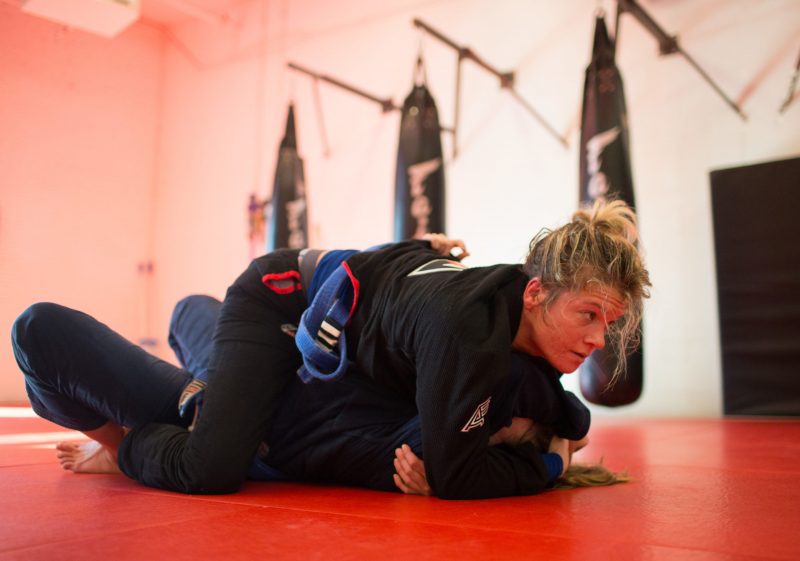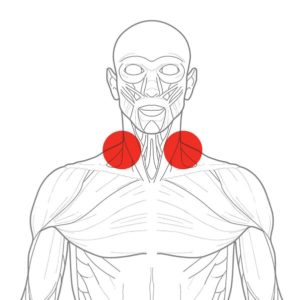How to Get Better at BJJ: 5 Tips
Heather Raftery
There’s no magic bullet for how to get better at BJJ – it takes a sustained effort – but these 5 tips will help you get better faster. Read on to learn how you can improve your retention, build your knowledge base, and roll longer.

How to Get Better at BJJ
We all want to get better at BJJ, and we want to do it as fast as possible. The bad news is: there is no quick and dirty secret method to get you from white belt to black belt faster than BJ Penn. But there are a few things you can do to improve your retention, build your knowledge base and improve faster than you would by simply attending class.
1. Be consistent
It may be cliché, but consistency really is the key to success. To improve at jiu-jitsu, you need to establish a non-negotiable, consistent training schedule for yourself. The “non-negotiable” part is, well, non-negotiable. You have to treat your training just as if it were a job; if you don’t go, you don’t get paid… if you don’t train, you don’t improve. Even if you’re feeling exhausted and out-of-shape, just go. You don’t have to go hard on the days you’re not feeling your best, but every second you spend on the mat provides the opportunity to learn someone new.
Of course, be consistent within reason. You don’t have to kill yourself doing three-a-day training sessions like a sponsored teenage athlete, just to get more time on the mat. In fact, overtraining could put you at risk of injury, or even burn you out mentally, forcing you off the mat for an indeterminate amount of time. Listen to your body.
2. Take ownership of your learning
There is only so much you can learn in class. That’s the hard truth. To get better at BJJ and expand your knowledge base, you have to take ownership of your learning. But what does this mean?
Take Notes
First of all, the most basic thing you should be doing is taking notes. In doing so, not only are you mentally reviewing what you just learned – whether it was in class or online – you’re also able to go back and remind yourself of details that you might have missed when you try to execute it live during sparring. In your notes, you should also keep a log of your progress, your strengths and your weaknesses. In this way, you’ll be able to create goals for yourself for that week’s training.
Take Private Lessons
Take private lessons. This is one of the best investments you can make for your jiu-jitsu. With private lessons, you receive comprehensive, one-on-one feedback about your particular game. And you might also get some invaluable tips and tricks you may not get in class. “Oh, but I can’t afford afford private lessons,” you might say. They don’t have to cost an arm-and-a-leg. If you’re planning on taking private lessons from the head black belt, yes, it will have a cost commensurate with the time and investment he/she has already put into the gentle art. But if you’re a white belt, you can obtain valuable insight from any higher belt, even a blue belt.
Understand the Underlying Concepts
You should also always, always seek to understand the concepts behind the technique. Don’t just mindlessly practice a technique, step-by-step, just as your coach demonstrated it. Instead, ask why it works the way it does, why you do this or do that, why you do this and not that. For example, why does an arm bar work? Because it’s a hyperextension of the elbow. You isolate the shoulder and the wrist, then apply pressure in the opposite direction that the elbow is supposed to bend. If you understand that concept, you can do an arm bar from any position – no matter how crazy or unorthodox.
Find a Drilling Buddy
Finally, you need to find a good training buddy to drill with during off-hours. Ideally, this person should have similar goals to yours. This will help keep you both accountable and consistent in scheduling your drilling sessions.
Now, when you think of “drilling” you might think of infinite repetitions of a technique. This is fine for developing muscle memory, but it’s not the only way to drill, and it’s certainly not the best… or the most fun. Instead, “workshop drill,” where you and your training partner take a position or technique and explore it. Give each other different reactions to discover the many pathways that connect to it, or the submission opportunities that may present themselves. You can also take that drilling to the next level, and do positional sparring with your training buddy. This is particularly useful for developing any weaknesses in your game or positions you might not find yourself very often during live training.
3. Expand your horizons
If the only BJJ you ever see is limited to the four corners of your home jiu-jitsu academy, then you’re doing yourself a disservice. In fact, most academies tend to slightly favor certain techniques or positions, depending on the individual strengths of the head coach or coaches. Additionally, Brazilian jiu-jitsu is still evolving. So if you really want to know how to get better at BJJ, you need to capitalize on the wealth of information out there and you have to expand your horizons.
Go to open mats, attend seminars or jiu-jitsu camps, and always bring your gi or rash guard with you whenever you travel. In this way, you’ll be able to see different styles and systems of jiu-jitsu, some of which you’ll be able to incorporate into your own game. You might even learn new and interesting details about techniques you’ve already learned and believed you knew.
4. Compete
This is, by far, the most impactful experience for the growth of your jiu-jitsu. I’ve always believed that one competition is worth three months of regular training. Why? Because in going up against someone you’ve never – or rarely – go with, you will quickly see where your game is.
When you train only at your own academy, you train with the same people time and time again. You’ll learn their game, they’ll learn yours, and it’s hard to look at your progress objectively.
When you compete, you’re able to see where your strengths are, where you’re weak, and how you compare to the rest of the jiu-jitsu community. This knowledge is critical for your evolution as a jiu-jitsu practitioner. Even the process of preparing for a competition will have profound impacts on your jiu-jitsu. This is because you’ll train more, drill more, and prepare yourself as best as you can to win.
5. Care for your body
You won’t improve if you can’t train, and you can’t train if your body is broken or compromised in some way. The best way to keep it in tip-top shape – and even improve it, thereby improving your ability to execute techniques – is to cross-train.
Most top-level competitors do some sort of strength and conditioning program, to improve their strength, endurance and explosiveness on the mat. A lot of practitioners also do yoga, to improve their flexibility and ability to invert or maneuver in tight spaces. Both of these activities also offer protection against jiu-jitsu related injuries.
However, to really care for your body and prevent against injuries – and reduce the risk of being sidelined for an indeterminate amount of time – you should also incorporate a comprehensive prehab routine into your weekly training schedule. A few minutes of prehab exercises each week can save you months of time caring for an injury.
Plain and simple, if you want to know how to get better at BJJ, you need to know how you can stay healthy and on the mat. Read more about prehab here.
Conclusion
These 5 tips should give you a good idea of how to get better at BJJ. But no matter what, you have to put in the work. There’s no way around that. Rather than “just train more,” these five tips will give you a more directed and intelligent approach to speed up the rate at which your jiu-jitsu is progressing.
Heather Raftery is an Atos black belt, freelance writer and social scientist (BA in Journalism and Anthropology, MA in International Studies). She has written for FloGrappling, Jiu Jitsu Magazine, Fighters Market and BJJ Prehab.









